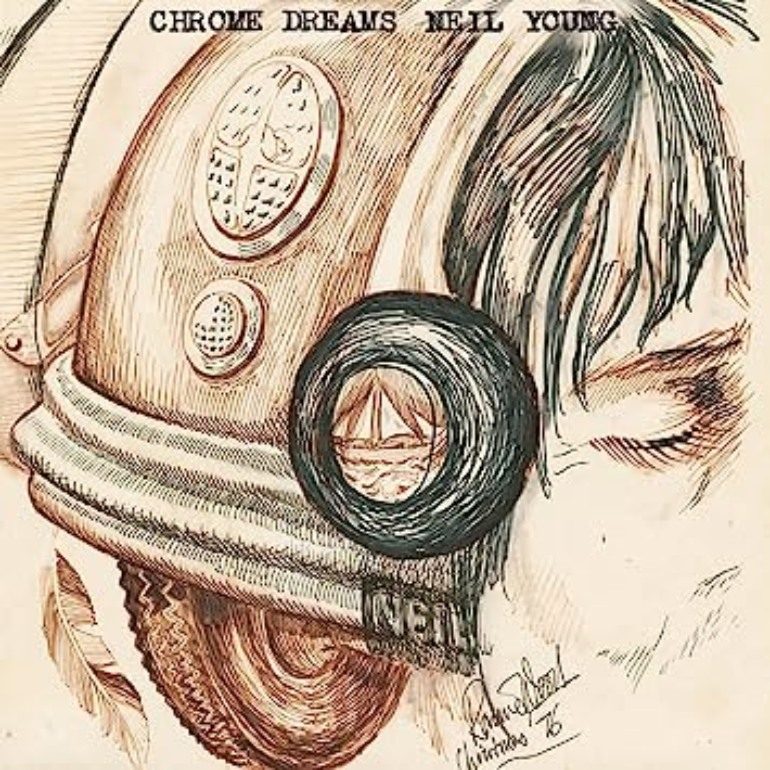

A simple google search for Neil Young and Chrome Dreams will lead any new Young fans into a multiversal dimension of musical lore to find that this album, beyond any before, has been long-awaited. Originally recorded between 1974-1976, the album became an unreleased classic and better known as his “lost” album. Andy Green’s 2017 Rolling Stone article lists Chrome Dreams as one of these. Noting that Chrome Dreams II had been released in 2007, “only the true fans knew that the title referred to an unreleased 1977 album.” This aura of selectivity in songs that make the final album isn’t necessarily rare or unheard of in the industry.
It is fairly common to find avid listeners mining the musical reliquaries in search of these unreleased relics and place them on a musical pedestal. While it is niche, the quest for these tracks guide those listening toward a certain musical intimacy outside the breadth of an artists official discography. For Young veterans, this release is a pivotal and extremely reverent moment in time. Greene further elaborated on the grail-like nature of the album, stating, “Nearly any other artist would consider Chrome Dreams an absolute masterpiece destined to define them forever. For Neil, it was just something to toss aside and scrap for parts when the need hit.”
In this context, listening to Young in this era is cognizant of a trip back in time for those who may have found Young in their youth and grasped at his adept aptitude in lyricism and songwriting. For those being introduced to Young with this release, the historical precedence of the time in which these songs were written and recorded is not without its fair share of civil unrest and discord. Pressed into infamy, Woodstock, where Young performed as part of Crosby, Stills, Nash and Young had occurred just some five years prior to the compilations completion. Mired between the dates of recordings was the end of American involvement in the Vietnam War.
As a 3-sided double album the track listing includes an early solo version of “Powderfinger” and “Stringman” which had previously appeared on the live albums, Odeon Budokan (1976) and Unplugged (1993). While the two versions of the song exist in discussion of Young’s musical timeline, this recording differentiates by including an intro of a simple chorus of harmonizing vocals, subtle electric instrumentation accenting the verse and that signature recording crackle. For the Hammersmith and Ed Sullivan’s Hall devotees, this version will not disappoint. In fact, without diving into the musical anomalies of the album, it is simply one that must be listened to in earnest.
Young seems to recognize this as the two singles “Sedan Delivery” and “Hold Back the Tears” differ from their counterparts. Most notably, “Hold Back the Tears” sheds its country-western exterior to reveal a grating acoustically adorned Young plucking the strings in stark juxtaposition to the heady slurred strings on American Stars ‘n Bars version.
In a 2014 interview with Charlie Rose, when commenting on his Woodstock performance as part of Crosby, Stills, Nash and Young, Young says: “We have a generation, we are…we are somebody you know? And it’s right now and we are somebody, we are making a difference.”
Whether a member of Young’s generation, those after or inevitably those to come, Chrome Dreams is a record to drop the needle on in continuum. The connection between the artist and the listener is an intrinsically dynamic relationship that thrives on the vulnerability that is both the pinnacle and the crux of this human experience. Young was right, there is beauty in that.
